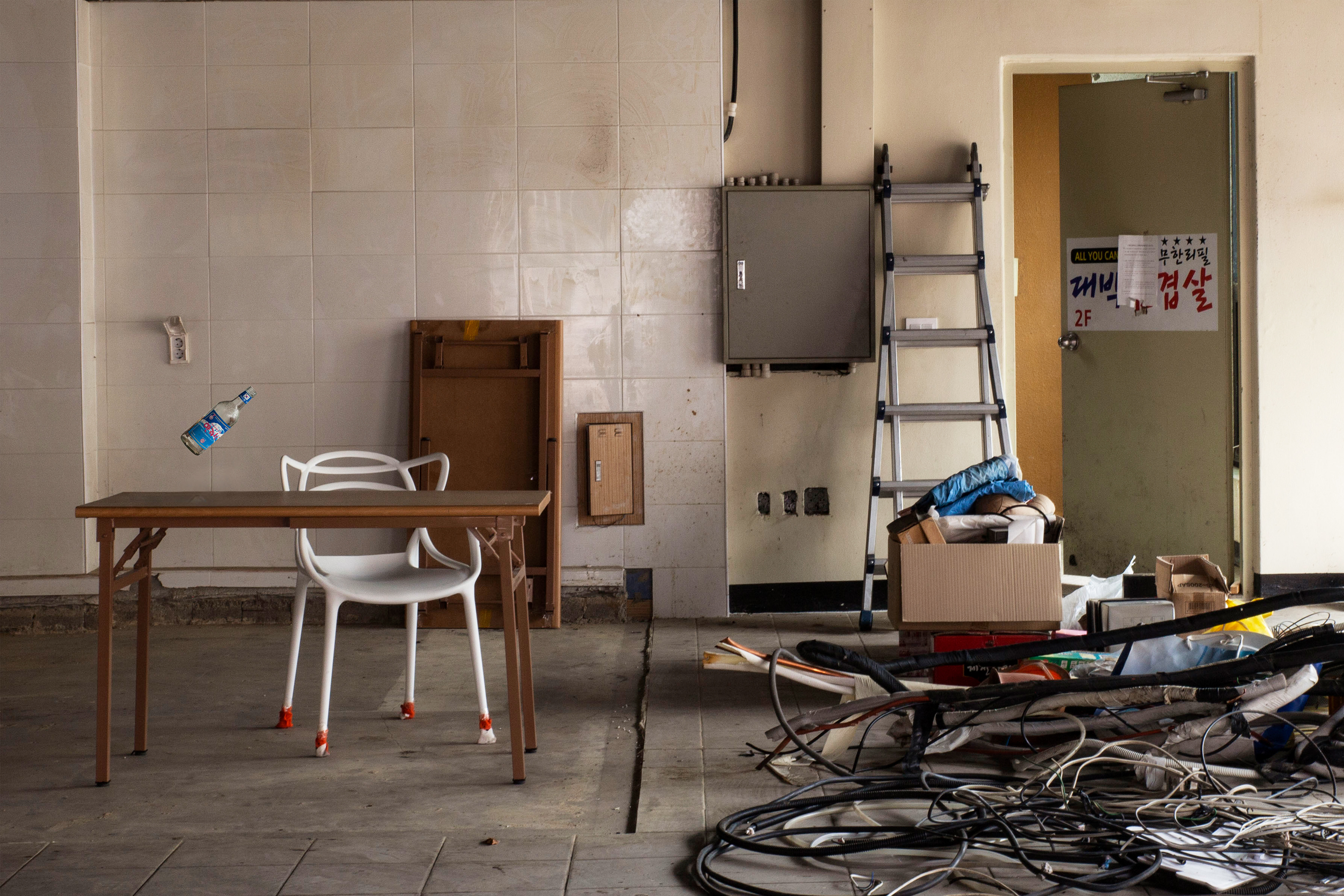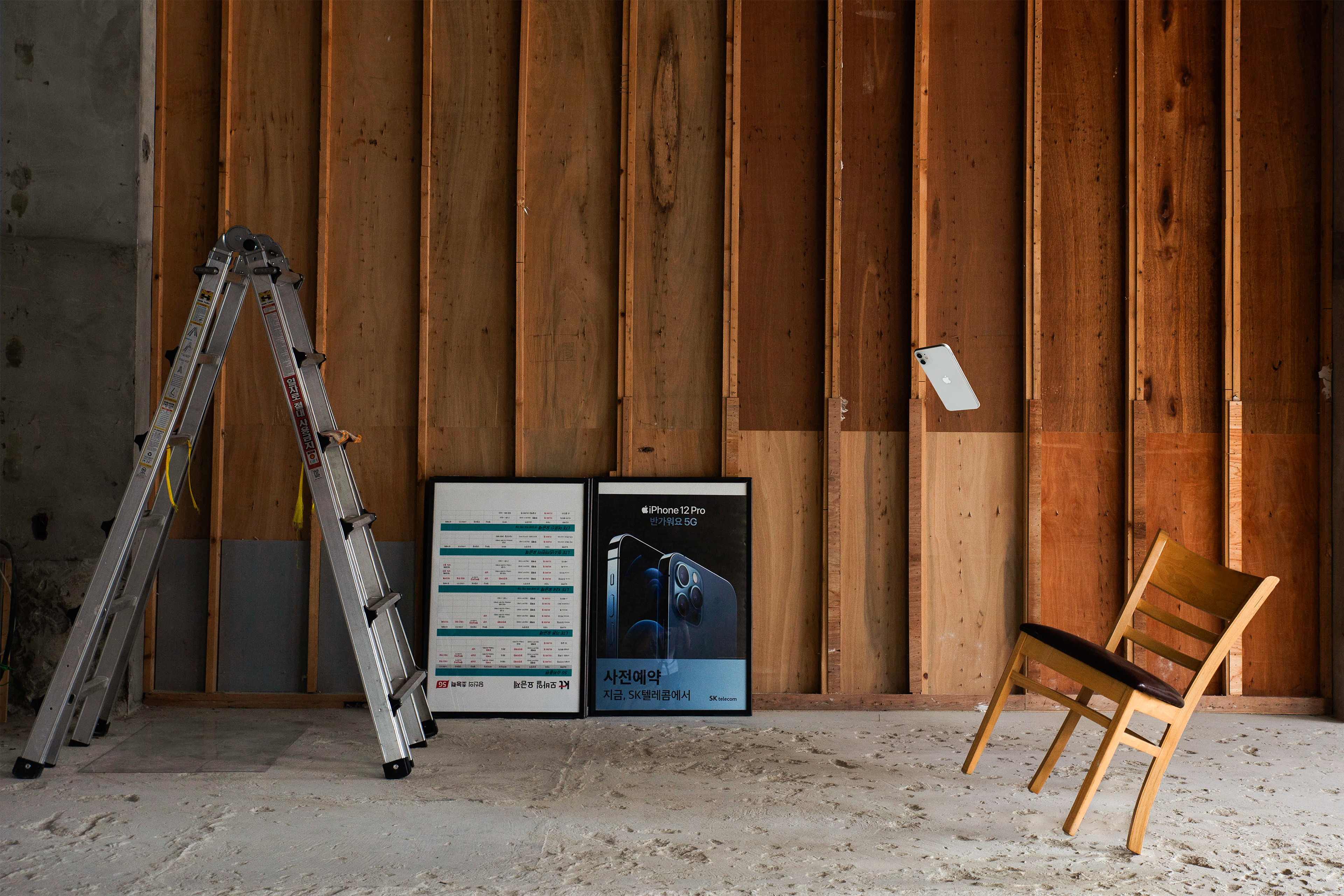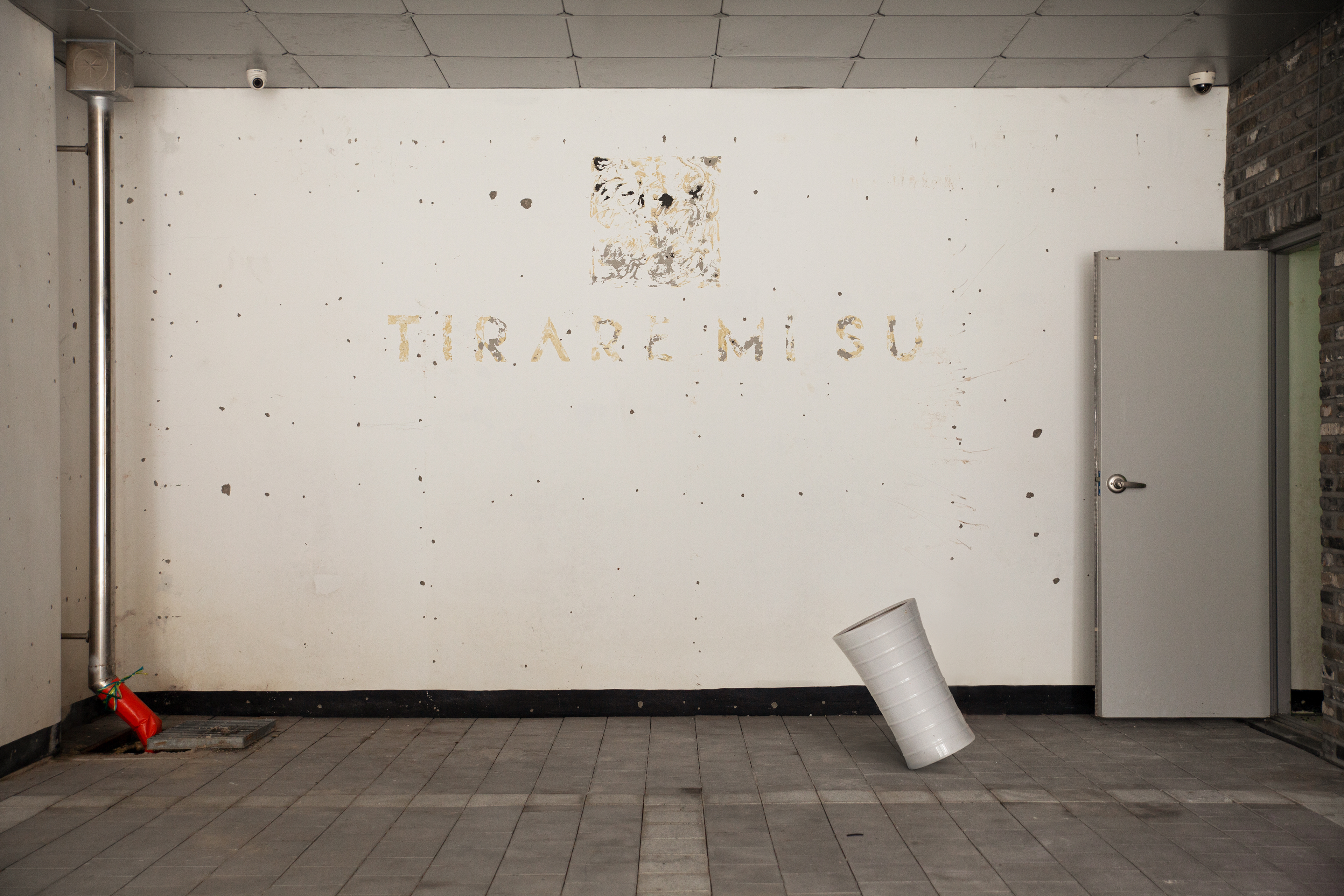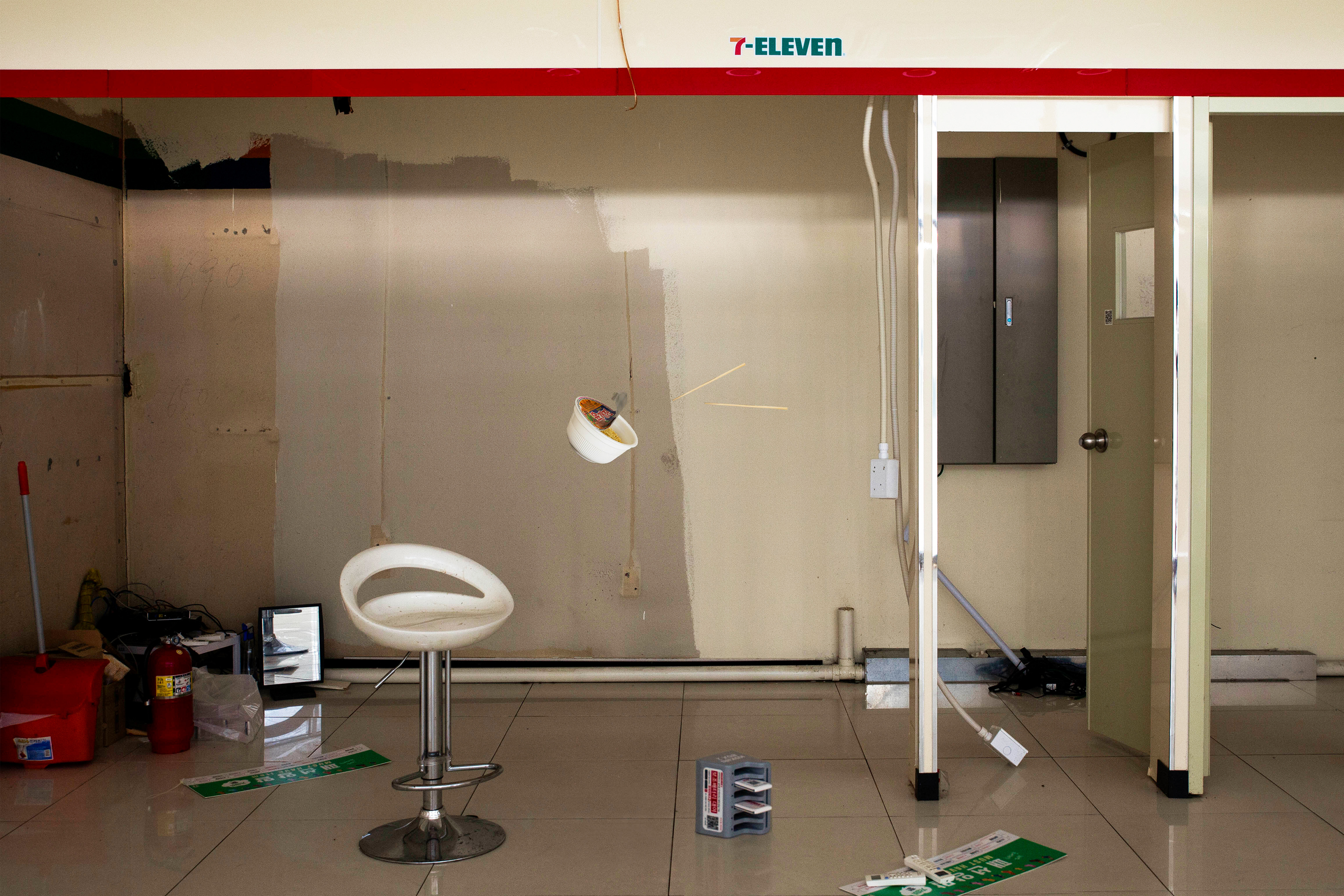VITALITY (2021)










어느 날부터인가 거리를 걷다 보면 유독 빈 가게들이 자주 눈에 띄기 시작했다. 문을 닫은 가게의 유리창 너머로 남아 있는 여러 흔적을 엿볼 수 있었다. 제멋대로 널브러져 있는 가게의 잔재들은 이렇게 텅 비고, 망가져 버린 공간이 불과 몇 개월 전까지만 해도 자영업자의 생업공간이었다는 사실을 나에게 환기시켜 주었다. 뉴스를 통해 본 코로나 19로 인한 시대의 고통은 무엇인가 멈춰지고, 부서지고, 조각난 상태로 내 주변의 어떤 공간들에 오롯이 담겨 있었다. 나는 그 안에 들어가 보고 싶어졌다.
뭔가 이상했다. 처음에는 그냥 죽은 공간처럼 보였던 그 곳은 가게의 흔적을 인식하는 순간 다르게 보였다. ‘죽어있는 것도, 살아있는 것도 아닌 공간’으로 말이다. 인간은 본래 용도에 맞게 공간을 개조하고 장소로 사용한다. 그래서 폐교, 폐가, 폐상가 등등 어떤 장소의 역할이 사라진 공간을 사람들은 ‘버려지거나, 죽은 공간이다’라고 표현한다. 나는 ‘죽은 공간’이라는 말이 참 모순적이라는 생각이 들었다. 그 자리에 그대로 있던 공간을 인간이 사용하면 마법처럼 살아나기라도 하는 것인가. 어떤 사연으로 버려지고 죽은 공간이 되는 것인지. 어떻게 찾아지고 어떻게 살아나는지. 아무 생각 없던 그 공간들이 다르게 보이기 시작한다. 지금 내가 사는 집도, 높은 건물도, 화려한 도시도 인간의 손길이 끊기면 죽은 공간이 되어버리는 걸까? 나와 무관하지 않은 저 공간이란 무엇일까? 이러한 생각과 고민들을 바탕으로 작업을 시작했다.
먼저 코로나19의 여파로 문을 닫은 가게들을 찾아 사진을 찍었다. 그리고 나는 약간의 생명력을 불어 넣었다. 희미하게 묻어있는 가게의 흔적과 부유하는 에너지를 머금은 오브제들은 용도가 멈춰버린 즉, ‘죽은 공간’에 대한 재고를 불러오길 바랐다. 이러한 작은 개입은 내가 느꼈던 변화의 시작이자, 의구심이고, 이 시대를 그냥 지나치지 않으려는 작가의 의지이다. 이 작품을 만나는 순간 ‘죽은 공간’은 보는 이에게 더 이상 그냥 죽은 공간이 아니길 원한다. 내가 길거리에서 문을 닫은 가게의 잔재들, 공간 속에 남겨진 사연들을 바라보고 그 장면에 참여하며 상상했던 ‘살아 있는 공간’을 함께 볼 수 있으면 좋겠다.
One day, when I walked on the street, I often noticed empty stores. I could see several traces left over the windows of the store that was closed. The remnants of the store, which were scattered arbitrarily, reminded me of the fact that such empty and broken space was a living space for the self-employed only a few months ago. The pain of the times caused by COVID-19 I saw on the news was contained in certain spaces around me in a stopped, broken, and fragmented state. I wanted to try entering it.
Something was strange. At first, it looked like a dead space, but the moment they recognized the traces of the store, it looked different. It is a space that is neither dead nor alive. Humans renovate the space to suit its original purpose and use it as a place. So, spaces in which the role of a place has disappeared, such as closed schools, abandoned houses, and abandoned shopping centers, are described by people as 'a abandoned or dead space'. I thought the word 'dead space' was very contradictory. If humans use the space that was in that place, would it even magically live? What kind of story it is to be abandoned and become a dead space. How to find it and how to live. Those spaces that had no thoughts start to look different. Will the house I live in, the tall building, and the colorful city become a dead space when human touch is cut off? What is that space that is not related to me? I started working on it based on these thoughts and concerns.
First, I looked for stores that were closed in the aftermath of COVID-19 and took pictures. And I blew some life into it. I hoped that the faint traces of stores and the objects with rich energy would bring about a reconsideration of the stopped use, that is, the 'dead space'. This small intervention is the beginning of the change I felt, doubts, and the artist's will not to let this era go. The moment I meet this work, I want the 'dead space' to no longer be just a dead space for the viewer. I wish I could see the remnants of stores closed on the street, the stories left in the space, participate in the scene and see the 'living space' I imagined.